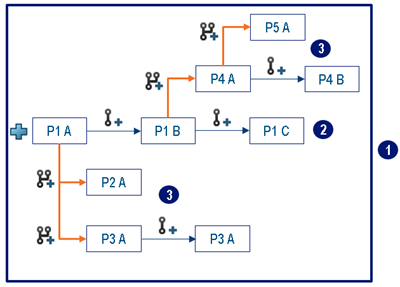Creating a Branch | ||||||
|
| |||||
Context: The following diagram shows examples of branches: 
- 1: The revision family, containing all the revisions and branches of the initial object.
- 2: The initial P1 branch.
- 3: Derivative P2, P3, P4, and P5 branches. The P2 and P3 branches might represent alternative studies, the P4 branch represents another version of the object, and the P5 branch might represent a fix of the P4 branch.